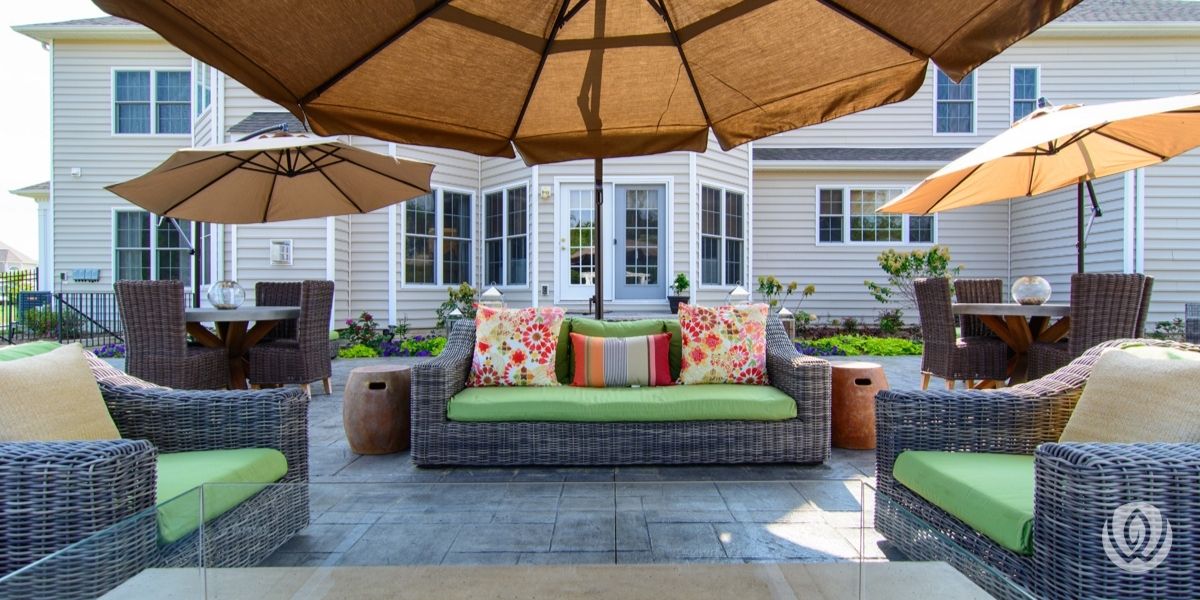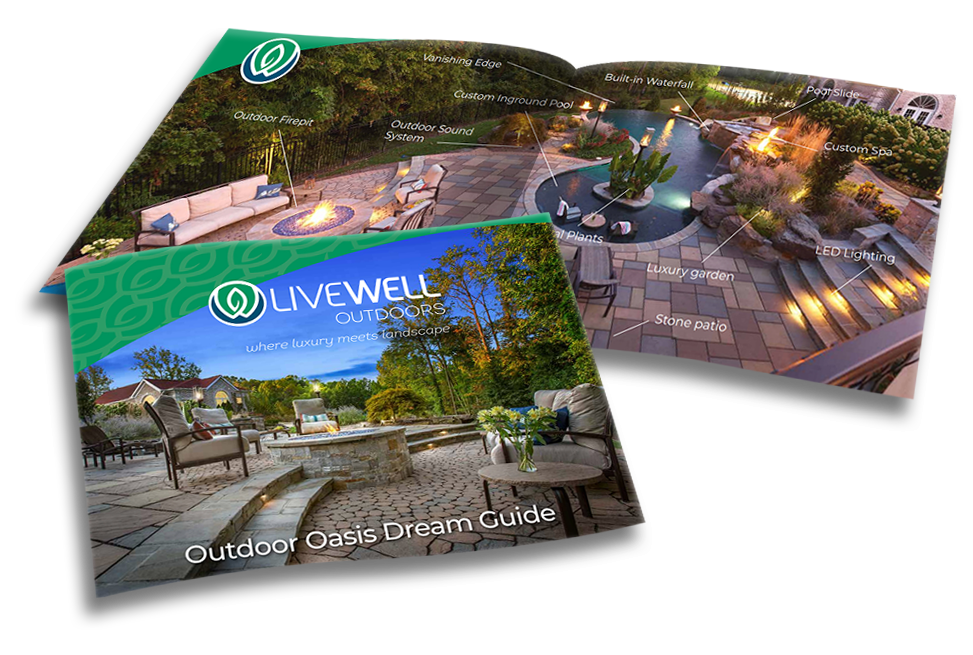
Landscape design is both an art and a science. It’s an art, because you are creating something beautiful, by arranging and modifying the features of your yard for aesthetic reasons. But landscape design is also a science, because we have to choose the right plants that will both look good and thrive. We have to take into consideration the soil type, climate, space available, and much more.
We combine your vision with our expertise to create a distinctive landscape design that will surprise and delight the senses. Keep reading to learn more about what goes into a successful and beautiful landscape design.
If you’re new to landscape design, mastering some basic landscaping terms can make the process much easier. Explore them here: Landscaping Terms You Need to Know.
There are a number of moving parts with landscape design. This is part of the art. There are four basic elements to include in a distinctive design. A well-planned landscape design is cohesive, and will not look like you just threw things together with no thought of what the finished project would look like.
Lines of course can be straight or curved. Straight lines can be horizontal, vertical or diagonal. In landscape design, straight lines can accentuate or draw attention to a focal point. Consider the straight pathway to the fire pit or pool house. A direct route to the focal point will draw people in. By contrast, a curved path or walkway that meanders through your gardens can create a feeling of surprise when one comes upon a gazebo or water feature.
Lines can be real or perceived. Real lines would include brick borders to your pathway, or the lines of a pergola. Perceived lines would include a straight hedge or row of trees to imply a line.
Forms are the shapes of the elements you include in your landscape design. Plants come in several forms, including round, upright, spreading, etc. And your hardscape elements fit into this composition as well. Rounded plants in a curved garden bed with curved pathways give the design a flowing, natural feel. In contrast, manicured hedges with a linear sidewalk give off a more formal feel.
Color is the most well-known and used element in landscape design composition. Choosing certain colors will have different visual impacts on your landscape. Warm colors include reds, yellows, and oranges. Cool colors include blues, greens, and purples. Other colors such as whites and pinks can help transition from warm to cool.
Color choice is an important consideration for both plants and hardscapes. When choosing plants for your landscape design, you must keep in mind that both foliage and flower color can create moods.
Texture is a surface characteristic. All plant material and hardscape elements have their own texture – coarse, medium, or fine. You want to have contrasting textures to add interest to your overall landscape design.
Landscape plants, grasses, ground covers, flowers, shrubs, and trees have a wide range of textures. Leaves, petals, bark, and stems should all be considered. And your hardscape elements can range from rugged boulders to smooth columns or sleek benches.
To implement your landscape design plans correctly, you must carefully consider what plants you will use. Your landscape designer can help you with this. In landscape design, not only do the 4 elements above matter, but no matter how lovely your landscape design plans are, they will be a failure if you choose the wrong plants.
Things to consider include:
Size matters. You need to consider how large a shrub or tree will be when fully grown. Don’t plant something so close to the house if it will be scraping your home within a few years. Also look for balance.
Choose plants that will work for the particular location. Use shade plants for shady areas, and full sun plants in full sun. You’d be surprised how many people plant things in inappropriate areas and then are mystified when the plantings die.
Think about using native plants, that once established, can handle periods of rain or drought. Be prepared to water plants during dry times.
If you like to work in the yard, trimming, pruning, and weeding, that’s great. If however, you’d rather spend your time on the golf course or at the pool, opt for low maintenance plants. Or plan to hire a landscaping company to take care of everything for you.
Choosing the right landscape designer is crucial to enjoying your outdoor living space for years to come. You will want to hire professionals who have been in business for a number of years. Check out their portfolio and ask for references.
Make sure they are experienced in both landscape design and building the hardscape elements that go into a great design. This can include terrace gardens, retaining walls, pathways, patios, and more.
Do your homework, and interview several landscape design companies. Each consultation should give you an idea of who you would like to work with. Finally, hire a firm, and let the adventure begin!
